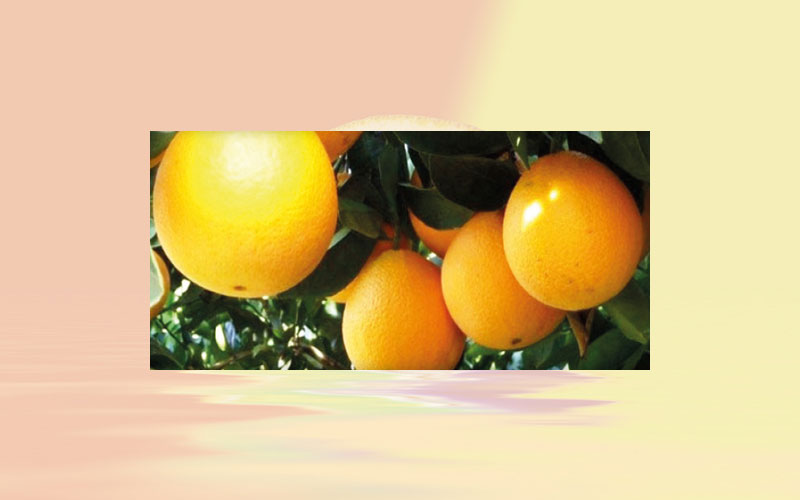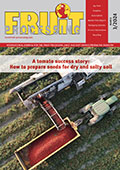Citrus: Brazilian exports fall 14 % in 18/19; tahiti lime price is the 2nd highest for April
The combination of lower orange supply in the Brazilian citrus belt in the 2018/19 crop with the recovery of Florida production is keeping the Brazilian exports of Frozen Concentrate Orange Juice (FCOJ) Equivalent low.

The combination of lower orange supply in the Brazilian citrus belt (São Paulo and Triângulo Mineiro) in the 2018/19 crop with the recovery of Florida production is keeping the Brazilian exports of Frozen Concentrate Orange Juice (FCOJ) Equivalent low. This season (from July/18 to March/19), Brazilian juice shipments to all destinations have totaled 783.4 thousand tons, 14 % down compared to that in the same period last season, according to Secex. Revenue, in turn, has reached 1.4 billion USD, 12 % lower in the same comparison.
To the European Union, the biggest purchaser of the Brazilian juice, shipments have totaled 506.29 thousand tons this season, 8 % down compared to the same period last year. Revenue, in turn, has reached 941.2 million USD, 6 % down in the same comparison.
To the United States, the Brazilian exports of FCOJ Equivalent totaled 167.8 thousand tons between July/18 and March/19, 26 % less than in the same period of the previous season. Revenue reached 296.7 million USD, 27 % down in the same comparison.
The American demand for the Brazilian orange juice should not decrease too much in the coming seasons, due to the damages caused by greening, a disease with severe effects on production in the long term.
CROP END – Fundecitrus (Citrus Defense Fund) announced, on April 10, that the orange production in the citrus belt (São Paulo and Triângulo Mineiro) has totaled 285.98 million boxes of 40.8 kilos this season, 28.2 % down compared to the output in 2017/18 (398.35 million boxes). Compared to the average in the last 10 years, the current production is 11.6% lower.
Lower productivity was triggered by the weather (heat and drought) during fruit development. Low supply, in turn, kept high the need of Brazilian processing plants for oranges in 2018, limiting availability in the in natura segment.
MARKET IN APRIL – The higher availability of early oranges in the 2019/20 crop pressed down the quotes of all varieties surveyed by Cepea in the first fortnight of April. With the maturation stage below that demanded in the in natura segment, trades were limited. Between April 1 and 15, pear orange prices averaged 35.17 BRL per 40.8-kilo box, on tree, 18.8 % down compared to that in the first fortnight of March.
TAHITI LIME – Tahiti lime prices have been firm in Brazil this year, which is not typical for a first quarter. Although harvesting stepped up (which is common for the beginning of the year, due to the crop peak), high demand for exports as well as from Brazilian processing plants is controlling supply in São Paulo State.
In this scenario, the average price in April (until April 15) is already the second highest for the month, in nominal terms, considering Cepea series, which started in 1996 for this product. The same was observed in the first quarter of 2019, when the nominal average in January was only lower than in Jan/18 and the nominal averages in February and March were only lower than in the same months of 2016 – tahiti lime quotes reached nominal records in Feb. and Mar. 2016 and in Jan. 2018, in the historical series.
Agents’ initial expectations were that the harvesting of the fruits from the second blossoming would increase tahiti lime supply in the in natura market in April, despite the smaller volume compared to that in the crop peak. However, mainly in January and February, the demand from processing plants was high and prices, appealing. Thus, many growers harvested all the fruits early in the year, reducing supply in March.
Some citrus farmers accelerated the tahiti lime harvesting early in the year, aiming to prepare the trees for production in the second semester of 2019 (when prices usually rise).
In early April, according to purchasers, it was still difficult to find high quality tahiti lime in the in natura market. While mature fruits were missing, the new ones were still green – for that reason, harvesting was postponed. Higher quality fruits, in turn, were allocated to the international market. Thus, between April 1 and 15, tahiti lime quotes averaged 23.49 BRL per 27-kilo box, harvested, a staggering 63.6 % up compared to that in the first fortnight of March.









